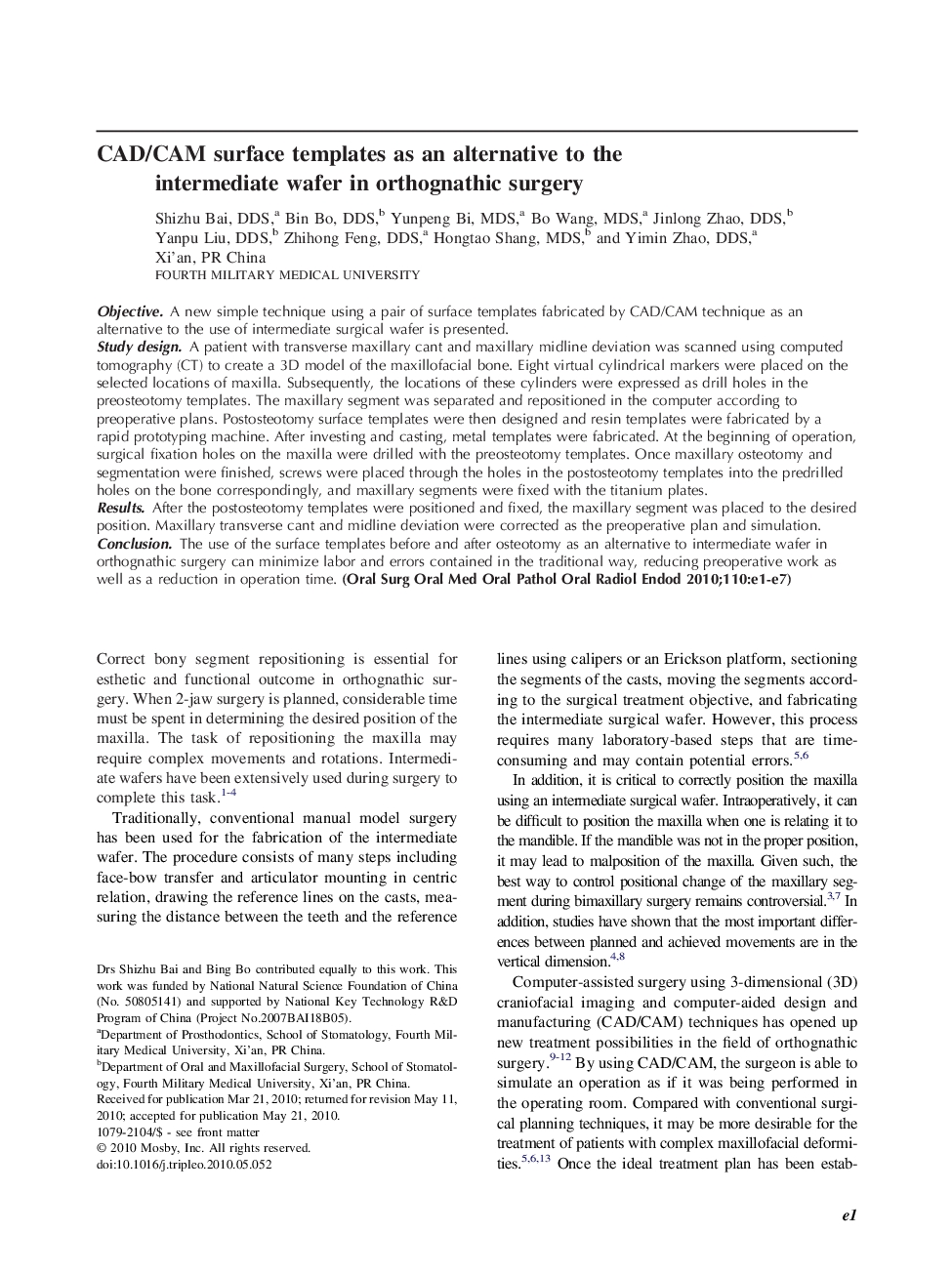| Article ID | Journal | Published Year | Pages | File Type |
|---|---|---|---|---|
| 3167452 | Oral Surgery, Oral Medicine, Oral Pathology, Oral Radiology, and Endodontology | 2010 | 7 Pages |
ObjectiveA new simple technique using a pair of surface templates fabricated by CAD/CAM technique as an alternative to the use of intermediate surgical wafer is presented.Study designA patient with transverse maxillary cant and maxillary midline deviation was scanned using computed tomography (CT) to create a 3D model of the maxillofacial bone. Eight virtual cylindrical markers were placed on the selected locations of maxilla. Subsequently, the locations of these cylinders were expressed as drill holes in the preosteotomy templates. The maxillary segment was separated and repositioned in the computer according to preoperative plans. Postosteotomy surface templates were then designed and resin templates were fabricated by a rapid prototyping machine. After investing and casting, metal templates were fabricated. At the beginning of operation, surgical fixation holes on the maxilla were drilled with the preosteotomy templates. Once maxillary osteotomy and segmentation were finished, screws were placed through the holes in the postosteotomy templates into the predrilled holes on the bone correspondingly, and maxillary segments were fixed with the titanium plates.ResultsAfter the postosteotomy templates were positioned and fixed, the maxillary segment was placed to the desired position. Maxillary transverse cant and midline deviation were corrected as the preoperative plan and simulation.ConclusionThe use of the surface templates before and after osteotomy as an alternative to intermediate wafer in orthognathic surgery can minimize labor and errors contained in the traditional way, reducing preoperative work as well as a reduction in operation time.
